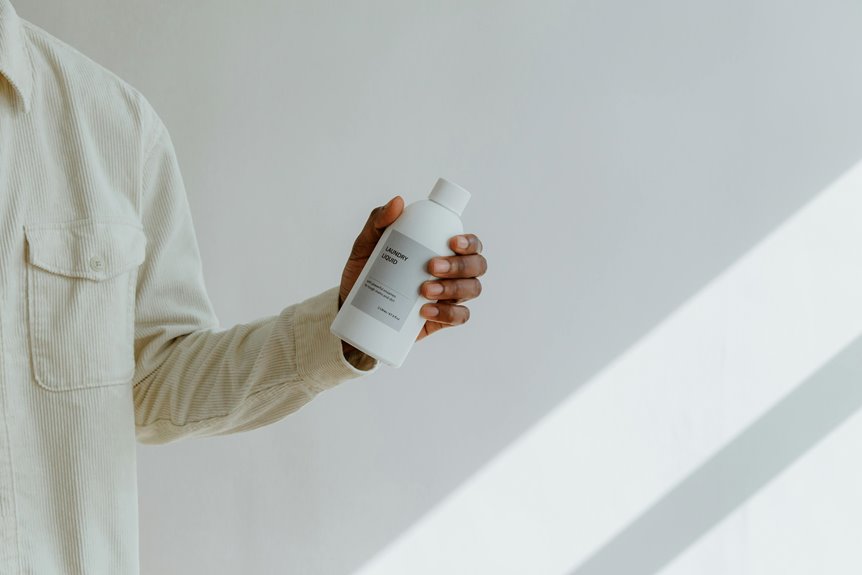Yes, corduroy is primarily made from cotton, which gives it that soft, breathable feel you’ll appreciate. The cotton fibers are woven tightly with extra yarns to form raised ridges called wales, creating its signature texture. Sometimes, you’ll find blends with polyester, spandex, or wool for added stretch, durability, or warmth. Corduroy’s unique structure makes it great for clothing and upholstery. Keep exploring, and you’ll discover more about its distinct qualities and care tips.
Table of Contents
Key Takeaways
- Corduroy is primarily made from cotton, providing softness, breathability, and durability.
- The fabric features unique ridges called “wales” created by extra fibers woven and cut.
- Corduroy may also include polyester, wool, spandex, or other fibers for added strength or stretch.
- It is commonly used in clothing like pants and jackets, as well as upholstery and cushions.
- Proper care includes washing in cold water, turning garments inside out, and gentle brushing to maintain texture.
What Is Corduroy Fabric Made Of?
Corduroy fabric is primarily made from cotton, but you might also find blends that include polyester or wool to enhance durability and texture.
When you look closer, corduroy’s unique ridged pattern, known as “wales,” comes from extra sets of fibers woven into the base fabric, creating those raised lines. These fibers are then cut to form the soft, velvety surface you recognize.
The number of wales per inch can vary, affecting the fabric’s feel and appearance. While cotton offers breathability and softness, adding polyester or wool can improve strength and warmth, making the fabric more versatile for different uses.
The Role of Cotton in Corduroy Production
Cotton plays an essential role in making corduroy fabric both comfortable and durable. When you choose corduroy made from cotton, you get a soft, breathable textile that feels great against your skin.
Cotton fibers provide the strength needed to withstand the weaving process that creates corduroy’s characteristic ridges, or “wales.” These wales give corduroy its unique texture while maintaining flexibility and resilience.
As you wear corduroy garments, you’ll notice cotton’s natural moisture absorption keeps you comfortable throughout the day.
Plus, cotton’s ease of dyeing lets manufacturers produce corduroy in a wide range of colors without compromising quality.
Alternative Fibers Used in Corduroy
Although cotton remains the most popular choice, manufacturers often incorporate alternative fibers to enhance corduroy’s performance and appeal.
You’ll find these blends improve durability, stretch, and even the feel of the fabric. When exploring corduroy options, consider these common alternative fibers:
- Polyester: Adds strength and wrinkle resistance, making corduroy easier to care for.
- Spandex: Provides stretch for added comfort and flexibility.
- Rayon: Offers a silky texture and drapes nicely, giving corduroy a softer hand.
- Nylon: Enhances abrasion resistance and durability.
- Linen: Introduces breathability and a lighter weight for warmer weather.
Characteristics That Define Corduroy
Distinctive ridges and a soft texture make corduroy stand out among fabrics. When you touch corduroy, you notice its raised parallel lines called wales, which give it a unique tactile and visual appeal.
These wales vary in width, from fine to wide, affecting the fabric’s overall look and feel. Corduroy’s softness comes from its cut pile, created by weaving extra sets of fibers that are then cut to form the ridges.
This structure not only defines its texture but also adds durability and warmth. You’ll find corduroy has a slight stretch and a sturdy weave, making it both comfortable and resilient.
These characteristics combine to make corduroy a versatile fabric loved for both style and function.
Common Uses and Care Tips for Corduroy Items
When you choose corduroy items, you’ll find they suit a variety of uses thanks to their durability and warmth.
Whether it’s clothing or home décor, corduroy adds texture and comfort. You’ll see it in jackets, pants, and skirts, perfect for cooler weather. It’s also popular in upholstery and cushions, giving rooms a cozy feel.
To keep your corduroy items looking their best, follow these care tips:
- Wash in cold water to prevent shrinking.
- Turn garments inside out to protect the pile.
- Avoid high heat when drying; air dry if possible.
- Brush gently with a soft brush to revive the fabric’s texture.
- Store folded to prevent crushing the ridges.
With proper care, your corduroy pieces will last and stay stylish.
Frequently Asked Questions
How Did Corduroy Fabric Get Its Name?
You’ll find corduroy got its name from the French phrase “corde du roi,” meaning “king’s cord.” The fabric’s ribbed texture reminded people of royal cords, leading to this distinctive and memorable name.
Is Corduroy Fabric Environmentally Friendly?
You might find corduroy less eco-friendly since traditional production uses cotton, which demands lots of water and pesticides. However, choosing organic or recycled corduroy can help you minimize environmental impact while enjoying its durability and comfort.
Can Corduroy Fabric Be Used in Formal Clothing?
Though corduroy feels casual, you can definitely wear it in formal settings if styled right. Pairing it with sleek pieces lets you mix comfort with sophistication, proving corduroy’s versatility beyond just relaxed wear.
What Distinguishes Corduroy From Velvet or Velveteen?
You’ll notice corduroy has distinct vertical ribs called wales, while velvet has a smooth, dense pile. Velveteen feels softer but is less plush, making corduroy more durable and textured compared to the other two.
Are There Seasonal Trends for Wearing Corduroy?
Think of corduroy as a trusty campfire, warming you as seasons shift. You’ll find yourself reaching for it mostly in fall and winter when its thick texture shields you from chilly winds and cozy comfort feels essential.
- Does Chiffon Fabric Stink - July 15, 2025
- Does Chiffon Fabric Affect the Economy - July 15, 2025
- Does Cotton Fabric Have a Nap - July 15, 2025







